On a hot day in July 2016, I stood near a group of Ukrainian volunteer soldiers in a shabby soccer field, safely positioned at the edge of the city of Mariupol. We were about ten kilometres from the sporadic gunfire of battle. Here was quiet refuge of play. Messy vines and dust-coated flowers sprouted out from cracks in the park’s concrete grandstands. I watched from the sidelines. The men casually kicked the ball around and yelled silly jokes during their off-hours from long nights of war. Life felt normal for a moment again.
Among those combatants was Sasha, my soon-to-be husband. He had just left the army and I, a Canadian journalist in Ukraine to cover the conflict, had hired him as my translator and guide. Slinking around with the ball, through sunburnt grass and humid air, sweat glistened off his 28-year-old face. He laughed with new friends as I carefully watched him from across the field. My hands were sweaty and stiff. Our plan for the week was to visit Mariupol’s frontlines. As I saw him move with joy, my desire to keep him safe derailed my bravery. He was confused and disappointed when I scrapped our dangerous adventures the next day.
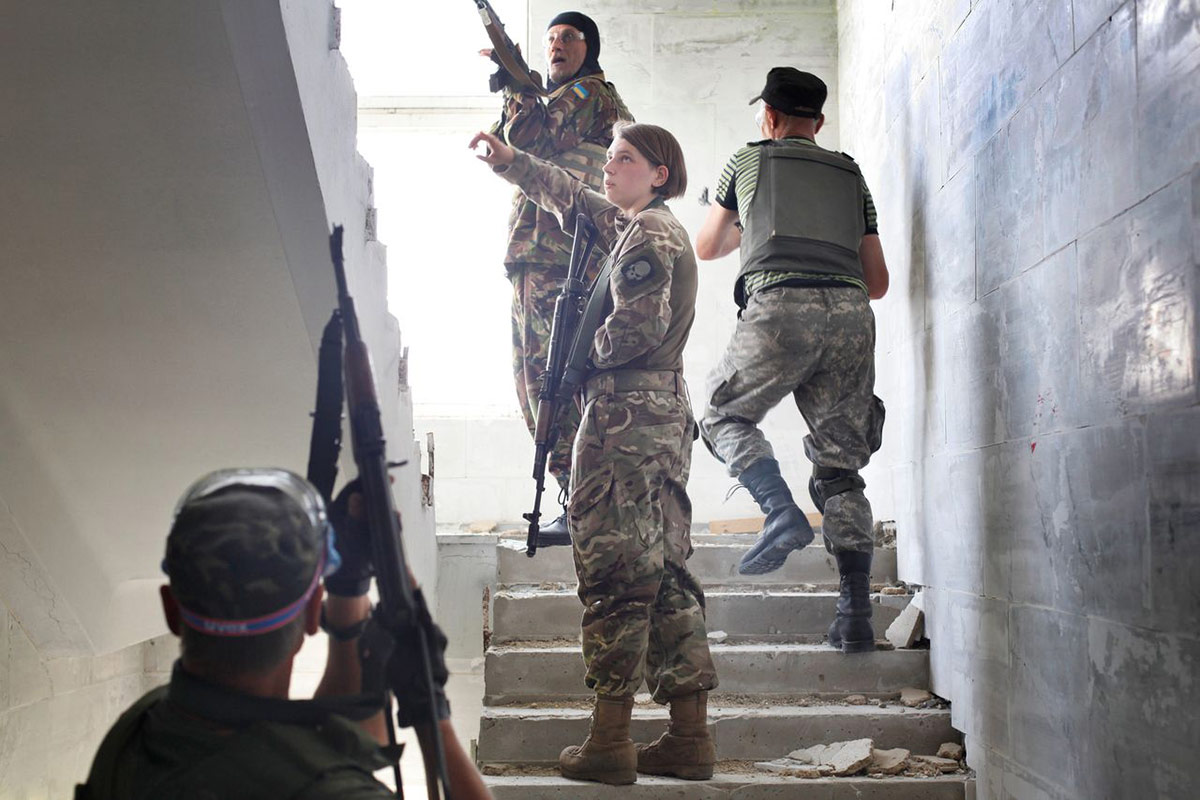
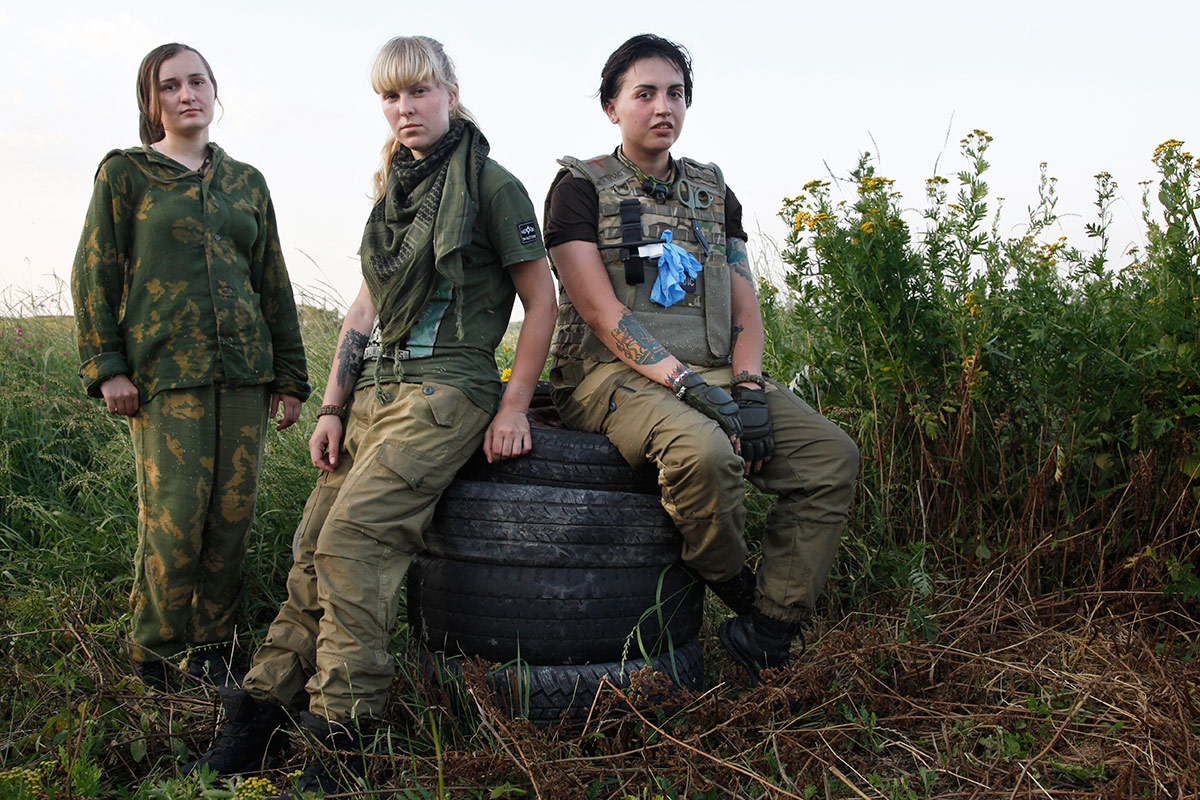
The Russo-Ukrainian War brought Sasha and I together in July 2015. We met at the Ukrainian army’s Donbas Battalion base camp, tucked away in rural Cherkaske, a town with empty rolling fields that were perfect for training. I was there to photograph female soldiers, armoured vehicles and military drills. He was there to fight for his country. I could easily leave if I wanted to, but Sasha could not.
Near the base’s headquarters tent, I stood under a hard sun and next to a hand-painted camouflage van. My nose was slathered with layers of sunscreen in a desperate attempt to stop heat bubbles from overtaking my face. Sasha saw me and slowly approached. His military vest was decorated with a knife and some tactical string. A camouflage helmet hung from his hand. “Do you speak English?” he asked.
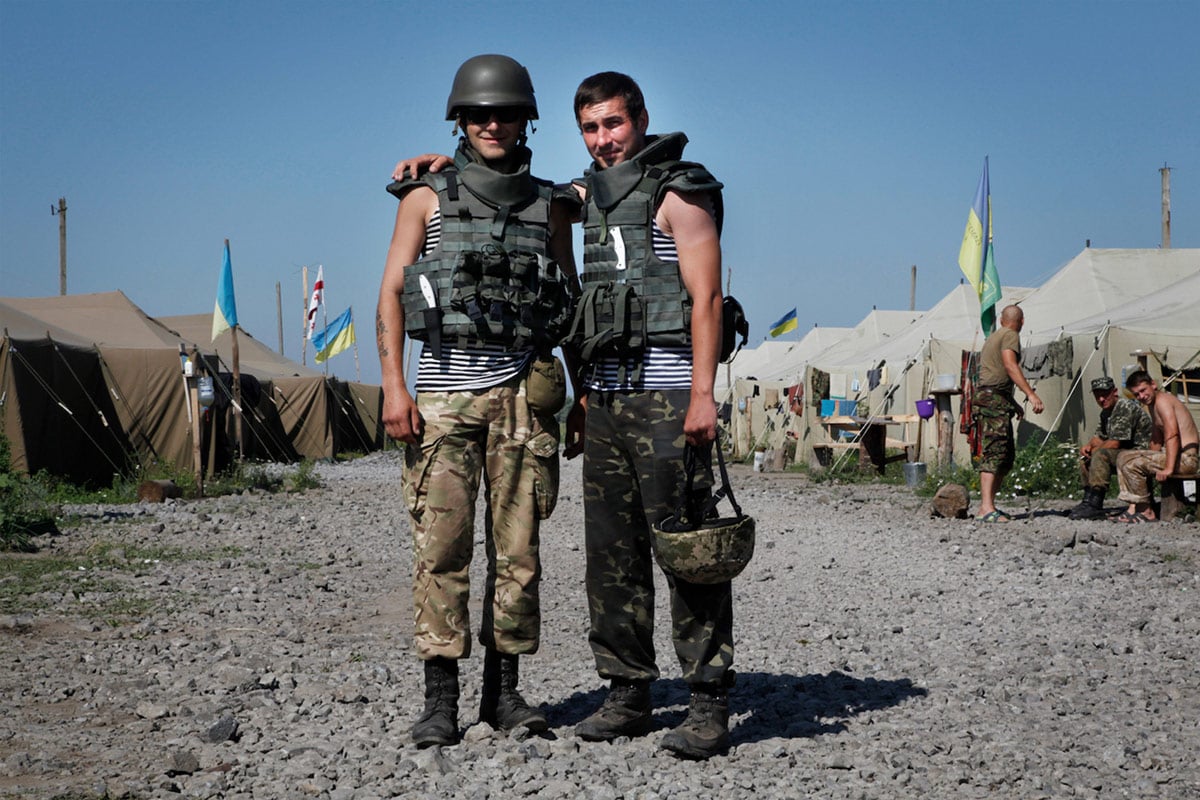
Later that day, Sasha gave me some Ukrainian Roshen brand candies outside his army green tent. Colourful and hard, they had melted a bit in their wrappers. It was the most he could offer from his limited personal stash, sourced from outside the base. Like many young men at war, Sasha was just a construction worker, dragged into a conflict without much of a choice. Impassioned to support Ukraine’s move away from Russian influence, he joined a volunteer battalion in early 2015. Then he stayed on with a paid year-long contract when the conflict continued. He trained to use deadly howitzers — artillery weapons that explode enemy targets, buildings or trenches or any threat deemed necessary to destroy.
When I returned to Berlin, a month after I met Sasha, we chatted online when he had short breaks from the army. Then days or weeks went by without contact. Cellphones present risks for soldiers near the frontlines because they can be tracked. So I often wondered if he had already died. Sasha would pop in and out of my digital life.
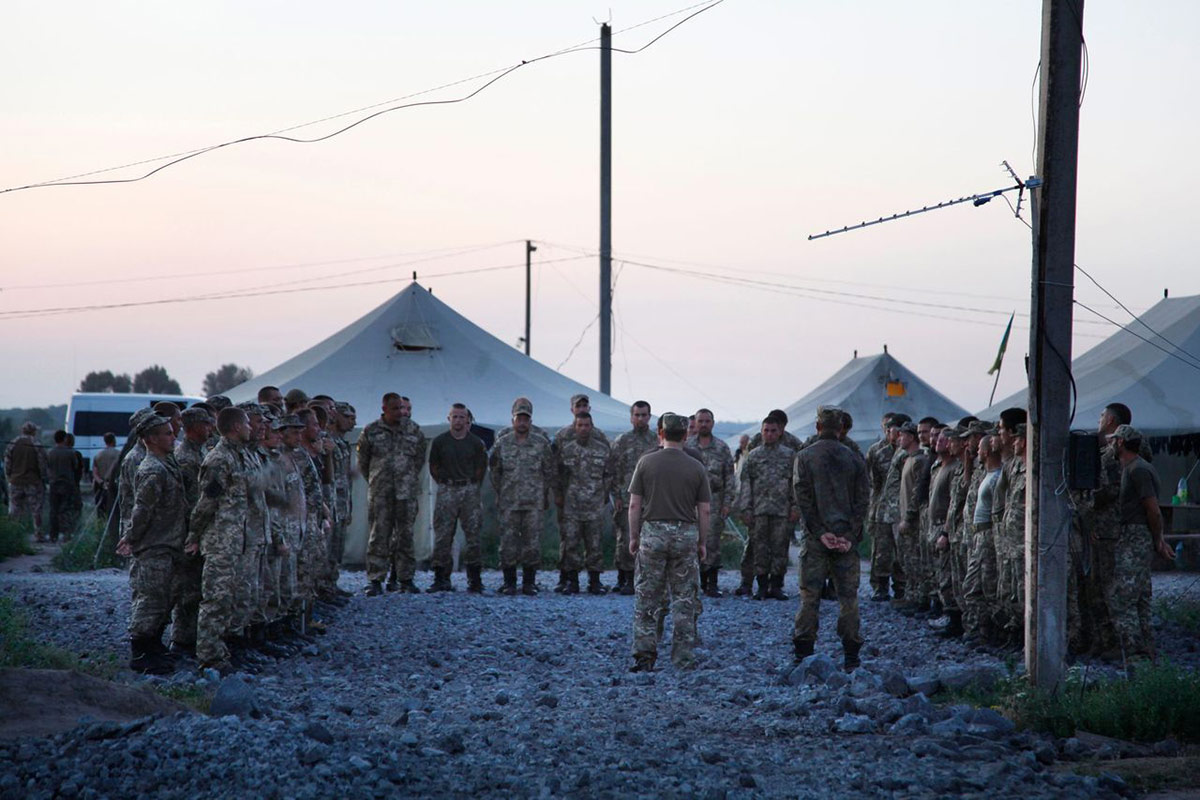
I returned to Ukraine when Sasha got out of the army in April 2016. His contract was over. Instead of renewing it, he chose to spend time with me. Together, we explored Ukraine’s brutal and mesmerizing post-Soviet charm. We marvelled at cold, concrete buildings, like Kyiv’s Vernadsky National Library. During the day, it looked like a sky-scraping prison that appeared to have no windows. Light shone through to reveal them at night. Such massive grey structures contradicted the kind-hearted warmth I felt from Ukrainian people.
I spent two Easters in Kyiv. People hand-painted eggs and gave them to me. And on non-holiday days, I was sometimes invited into apartments for home-cooked, traditional meals. Whenever I got lost in busy streets without Sasha, people helped me find my way. And once, on my birthday, my friend’s girlfriend recorded a video for me. She sang “Happy Birthday” and sent it to me over Facebook Messenger. I had only met her in person once or twice.
Sasha shared with me the local cuisine. We tried every perogy flavour, at restaurants along our travels. The best was split pea. And I liked the sugary strawberry ones for dessert. When I tired of red borscht, I ventured to green. I incessantly asked to know its mystery ingredient. I was just as confused when I discovered its name. “Sorrel? What’s that?” I’d ask. A friend finally explained that it’s a citrusy leaf.
My journeys through Ukraine lasted from 2015 to 2017. Going back and forth between Kyiv and Berlin, I photographed stories of war. When I needed a break, I focused on Ukrainian culture and art. I met fashion designers and performance artists — glorious people who used talent, not bullets, as weapons in life.
Sasha took me to modelling agencies to take pictures. In a battered ball cap, jeans and a polo T-shirt, he spoke to my subjects and explained my photographic intent. That alternate reality to being a soldier never made him feel out of place. He helped me photograph young, graceful girls as they held onto normal things in life, within their war-ridden world.
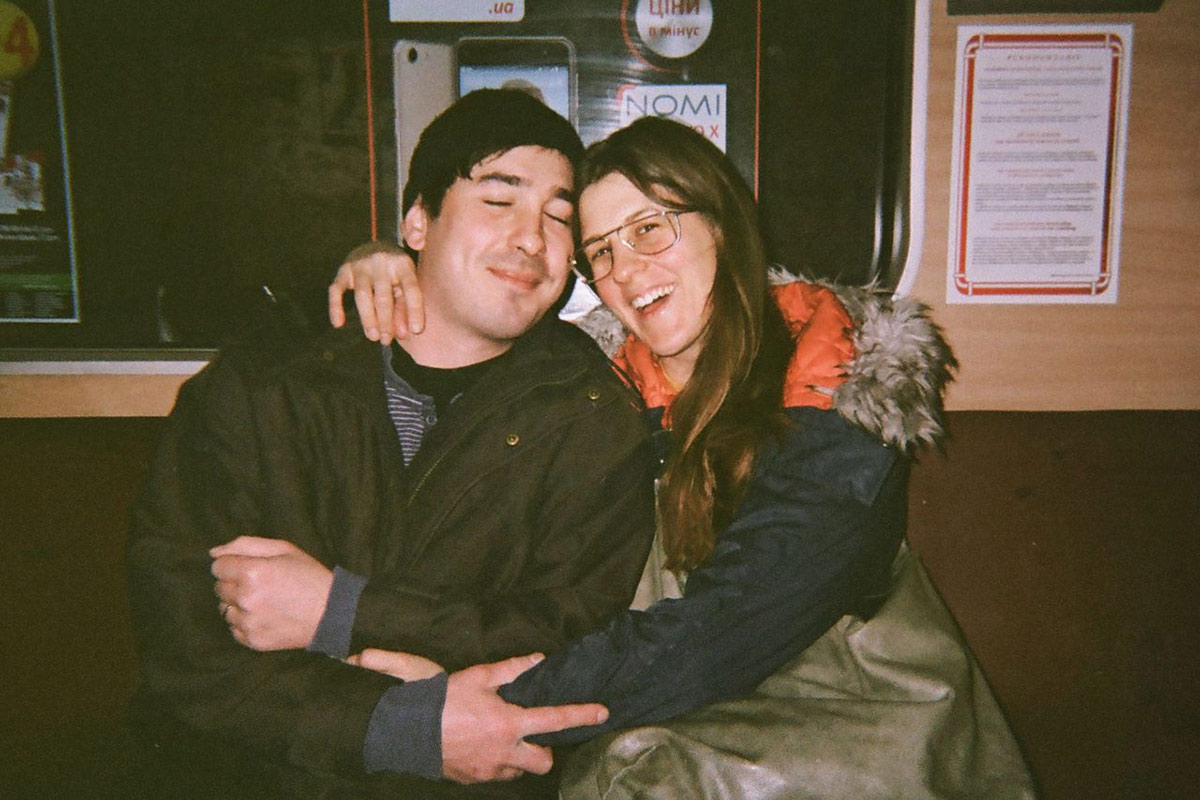
In the fall of 2016, Sasha and I married in Obolon, a working-class neighbourhood near central Kyiv. In a basic marriage hall void of decorative frills, we stood at the altar and read out our vows. The Ukrainian trident covered one wall. We bought basic rings. He found his at a street vendor in his hometown of Kremenchuk. I got mine from an independent jeweller in Berlin. They cost less than C$30 each.
The day we were married, I met Sasha’s mom for the first time. The afterparty was a short walk from the ceremony, at a small Georgian restaurant. It was just us, his brother and mother, and eight of our friends. We ate walnut salad and khachapuri, cheese-filled bread with an egg on top. And we drank just enough vodka to feel a light buzz.
A year after we married, we immigrated to Canada. We didn’t really want to leave Europe, but we wanted to stay together. And we thought it would be good to make more than the average wage in Ukraine, about C$10 a day. I don’t have an EU passport, so it felt impossible to bring Sasha with me to Berlin. The war was at a low simmer by 2017 anyway, so he didn’t have the urge to stay and fight. And we were worried he’d be conscripted for years back into a useless war without action if we hung around for too long.
Now, tucked safely away on northern Vancouver Island, we watch with horror as Ukrainians endure violent strikes at Putin’s whim. Sasha views the daily nightmare via his iPad. In February, as the Russian military invaded that very same neighbourhood where we married six years before, one of its armoured vehicles drove over a civilian car that had someone inside. The news hit international headlines and hearts all over the world.
On the other side of the world, Sasha is scared he’ll never see his country again in the way he remembers it. Some of Sasha’s friends are now dead. He is traumatized, struggling to weigh choices moral and existential. Last month, he told me he wants to go back and fight. I, too, am unsure about what to do next. I am drawn to cover the war in Ukraine. If I do, Sasha may follow and fight. He may go there anyway though. And what if I go but he chooses to stay here? Will he resent my choice? We have yet to talk it all through and make our decisions.
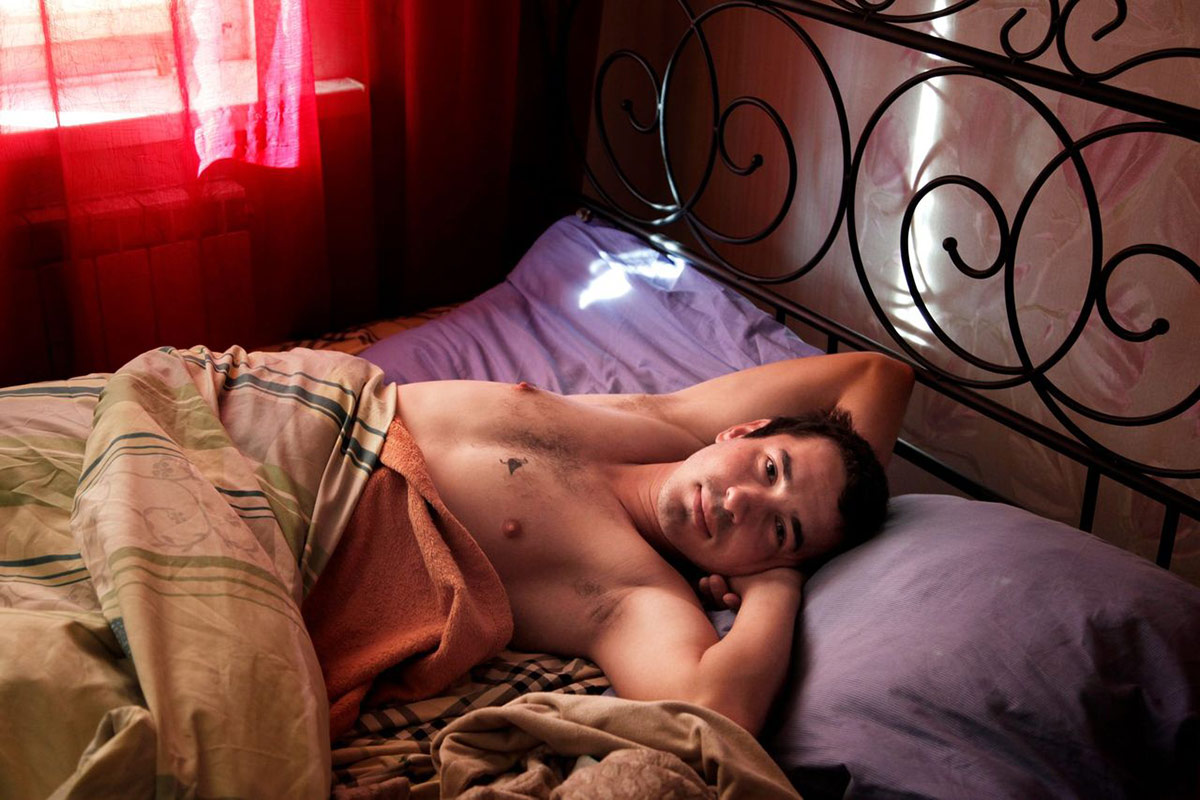
And so, when he’s not at work as a tile setter, Sasha sits glued to the news. I watch him, quietly, from across the room. I think to myself that Sasha may be alive today because I was there to help get him out of Ukraine. Yet I know he’s not fully happy here, in this land with money but that lacks soul.
Most of our conversations with people in Canada seem to be about buying houses or vehicles. Relationships here can feel, at times, void of depth. And the need to rely on one another, to get through hard times, can feel like a foreign concept in North America. Sasha views the trucker convoy as a recent example of that. To him, those “freedom fighters” don’t understand what it’s like to live in an unfree society. They put individual needs ahead of vulnerable people.
In relationships, we surrender ourselves to each other. I once told myself that I sacrificed my exciting life in Europe to bring my beloved husband to Canada. But I now understand that Sasha gave up his identity for me.
I fell in love with Sasha, who became the lens through which I fell in love with Ukraine. Now my favourite country’s cities are crumbling to the ground without sense. Last month, Mariupol was destroyed by missiles, rockets and bombs. Sasha mourns his dead friends. I worry about those beautiful people I once knew and still love, who now live under terror.
I know that for Sasha, Ukraine is home and more — a representation of his heart and a symbol of freedom. For his nation’s independence, he was once willing to die. If he goes back to fight, then what choice do I have? I’ll go back with him to take pictures. I’ll report on what has been lost, and what still remains. ![]()
Read more: Rights + Justice, Politics


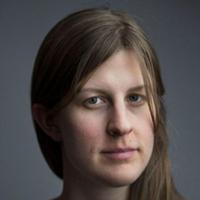













Tyee Commenting Guidelines
Comments that violate guidelines risk being deleted, and violations may result in a temporary or permanent user ban. Maintain the spirit of good conversation to stay in the discussion.
*Please note The Tyee is not a forum for spreading misinformation about COVID-19, denying its existence or minimizing its risk to public health.
Do:
Do not: